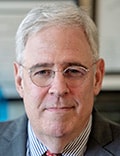As at-home, do-it-yourself (DIY) brain stimulation devices like transcranial direct current stimulation (tDCS) gain popularity for common psychiatric conditions like depression, anxiety, and posttraumatic stress disorder (PTSD), questions arise about their safety and efficacy.
However, the US Food and Drug Administration (FDA) has yet to "fully" clear any of these devices and has only granted breakthrough device designation to a few. In addition, most of the portable products don't market themselves as medical interventions, putting them into a regulatory "grey area" that has little oversight.
This has led to a free-for-all environment, allowing individuals to purchase these products online and self-administer "treatment" — often without the guidance or even knowledge of their healthcare providers.
So how effective and safe are these noninvasive brain stimulators, and what guidance, if any, should clinicians provide to patients who are or are contemplating using them at home; what does the research show, and what are the ethical considerations?
What the Research Shows
Data from studies examining unsupervised at-home and use under medical supervision are mixed. Results from a recent randomized trial of more than 200 participants showed no significant difference in safety or efficacy between adjunctive at-home tDCS and at-home sham tDCS for depressive symptoms.
"To be fair, they did not find any unexpected safety issues. What they did find was that there was no clear signal that it worked," Noah S. Philip, MD, professor of psychiatry and human behavior, Warren Alpert Medical School of Brown University, Providence, Rhode Island, told Medscape Medical News.

Philip, who is also lead for mental health research at Brown's Center for Neurorestoration and Neurotechnology, Providence, Rhode Island, and was not involved in the study, noted that while other research papers have shown more promising results for depression and other conditions such as adult attention-deficit/hyperactivity disorder (ADHD) and pain, they often are not placebo controlled or include large numbers of patients.
Still, he added the growing use of these devices reflects the fact that standard treatment often doesn't meet patients' needs.
"Broadly speaking, part of the hope with brain stimulation is that instead of taking a pill, we're trying to more directly affect the brain tissues involved — and therefore, avoid the issue of having systemic side effects that you get from the meds. There's certainly a hunger" for better interventions, Philip said.
tDCS involves a low-intensity electrical current applied through electrodes on the scalp in order to influence brain activity. Generally speaking, it emits less energy than other types of noninvasive brain stimulation, such as transcranial magnetic stimulation. "The trade-off is that's it also a little harder to find a clear signal about how it works," Philip said.
As such, he added, it's important for clinicians to familiarize themselves with these devices, to ask about patient use, and to set up structured assessments of efficacy and adverse events.
Results from a randomized trial published last year in The Lancet showed no significant benefit for in-office use of tDCS plus a selective serotonin reuptake inhibitor vs sham tDCS for major depression.
On the other hand, a randomized trial published earlier this year in Brain Stimulation showed that older adults who received active tDCS had greater reductions in depressive and anxiety symptoms than those in the sham group.
In addition, results from a small study of eight participants published last year in SAGE Open Medicine showed adjuvant tDCS helped patients with refractory PTSD. Finally, a randomized trial of 54 veterans from Philip's own team showed tDCS plus virtual reality was effective for combat-related PTSD.
Although there have also been several studies showing possible benefit of tDCS for Alzheimer's disease, Gayatri Devi, MD, Donald and Barbara Zucker School of Medicine at Hofstra/Northwell, Hempstead, New York, noted in a Medscape Neurology Decision Point that "the problem with all these studies is that they're all very small, and there [are] so many different variables in terms of how you interpret response."
On-Demand Brain Stim
As for at-home use, there's now a wide offering of these types of devices available online, allowing an individual to apply daily brain stimulation via headsets, dispensing with the need to consult a clinician. Most are battery-powered and emit a low-level current.
Philip noted that there are essentially two ways to obtain such devices. Some are readily available from online stores, while others require a prescription, which typically includes guidelines on how to use the device.
So far, none of these portable products have been fully cleared by the FDA — although the agency did grant Breakthrough Device designation to Sooma Medical for its device to treat depression in 2023 and to Flow Neuroscience in 2022.
In August 2023, Flow announced that its device is now being reviewed for full FDA clearance on the basis of trial results showing at-home tDCS was "twice as effective" as antidepressants. The company received regulatory approval in Europe in 2019.
Other research has shown "encouraging" results for these at-home devices for conditions such as adult ADHD and pain relief with remote supervision.
Philip noted that more high-quality randomized controlled trials are definitely needed, with "a number of companies probably getting close to releasing data sometime soon."
Is it possible that a placebo effect is at work here? "Yes, partially," said Philip. Users often become more mindful of managing their depression and other conditions, which leads to behavior change, he said.
A Quick Fix for a Broken System?
Joseph J. Fins, MD, The E. William Davis, Jr, MD, professor of Medical Ethics and chief of the Division of Medical Ethics at Weill Cornell Medicine, New York City, also believes there could be a placebo effect at play.

"It's important that we don't ascribe efficacy to a device without being aware of the placebo effect," he told Medscape Medical News. That's why more and larger, placebo-controlled trials are needed, he added.
There's a multitude of reasons why patients may turn to at-home devices on their own, including drug shortages and the inability to see a psychiatrist in a timely manner.
"I think it speaks to the isolation of these folks that leads to them doing this on their own. These devices become a technological quick fix for a system that's desperately broken. There's nothing wrong with being a consumer, but at a certain point they need to be a patient, and they need to have a clinician there to help them," he said.
Fins said that he also worries about regulatory oversight because of the way the devices are classified. He likened them to supplements, which, because they don't make certain claims, are not regulated with the same stringency as other products and fall into an area "in between regulatory spheres."
"I think we're trying to take old regulatory frameworks and jerry-rig it to accommodate new and evolving technologies. And I think we need to have serious study of how we protect patients as they become consumers — to make sure there's enough safety and enough efficacy and that they don't get ripped off out of desperation," Fins said.
As for safety, at-home devices are unlikely to cause physical harm — at least when used as intended. "The riskier situations happen when people build their own, overuse it, or use it in combination with drugs or alcohol or other factors that can produce unpredictable results," Philip said.
He added that DIY-built products carry a higher risk for burns or excessive energy output. A 2016 "open letter" from a group of neurologists, published in the Annals of Neurology and reported by Medscape Medical News at that time, warned about the dangers of DIY tDCS.
In addition, Philip noted that he has seen instances where patients become manic after using at-home tDCS, especially when trying to improve cognition.
"We have seen a number of peculiar side effects emerge in those situations. Typically, it's anxiety, panic attacks, and sensitivity to bright lights, in addition to the emergence of mania, which would require major psychiatric intervention," he said.
"So, it's important that if folks do engage with these sorts of things, it's with some degree of medical involvement," Philip added.
Ethical Considerations
Roy Hamilton, MD, professor of neurology, psychiatry, and physical medicine & rehabilitation at the University of Pennsylvania, in Philadelphia, told Medscape Medical News that in the setting of proper training, proper clinician communication, and proper oversight, he doesn't view at-home tDCS as ethically problematic.

"For individuals who have conditions that are clearly causing them remarkable detriment to quality of life or to their health, it seems like the risk-benefit ratio with respect to the likelihood of harm is quite good," said Hamilton, who is also the director of the Penn Brain Science, Translation, Innovation, and Modulation Center.
In addition, tDCS and other transcranial electrical stimulation techniques seem to have a better safety profile than "many of the other things we send patients home with to treat their pain," he said.
On the other hand, this risk calculus changes in a scenario where patients are neurologically intact, he said.
The brain, Hamilton noted, exhibits functional differences based on the region undergoing stimulation. This means users should follow a specific, prescribed method. However, he pointed out that those using commercially available devices often lack clear guidance on where to place the electrodes and what intensity to use.
"This raises concerns because the way you use the device is important," he said.
Hamilton also highlighted important ethical considerations regarding enhanced cognition through technology or pharmaceutical interventions. The possibility of coercive use raises questions about equity and fairness, particularly if individuals feel pressured to use such devices to remain competitive in academic or professional settings.
This mirrors the current issues surrounding the use of stimulants among students, where those without ADHD may feel compelled to use these drugs to improve performance. In addition, there is the possibility that the capacity to access devices that enhance cognition could exacerbate existing inequalities.
"Any time you introduce a technological intervention, you have to worry about discriminative justice. That's where only people who can afford such devices or have access to specialists who can give them such devices get to receive improvements in their cognition," Hamilton said.
Neither the American Academy of Neurology nor the American Psychiatric Association has established practice guidelines for tDCS, either for use in clinical settings or for use at home. Hamilton believes this is due to the current lack of data, noting that organizations likely want to see more approvals and widespread use before creating guidelines.
Fins emphasized the need for organized medicine to sponsor research, noting that the use of these devices is becoming a public health issue. He expressed concern that some devices are marketed as nonmedical interventions, despite involving medical procedures like brain stimulation. He concluded that while scrutiny is necessary, the current landscape should be approached without judgment.
Fins reported no relevant financial relationships. Philip reported serving on a scientific advisory board for Pulvinar Neuro and past involvement in clinical trials related to these devices and their use as home. Hamilton reported he is on the board of trustees for the McKnight Brain Research Foundation, which is dedicated to advancing healthy cognitive aging.
No comments:
Post a Comment
Note: Only a member of this blog may post a comment.